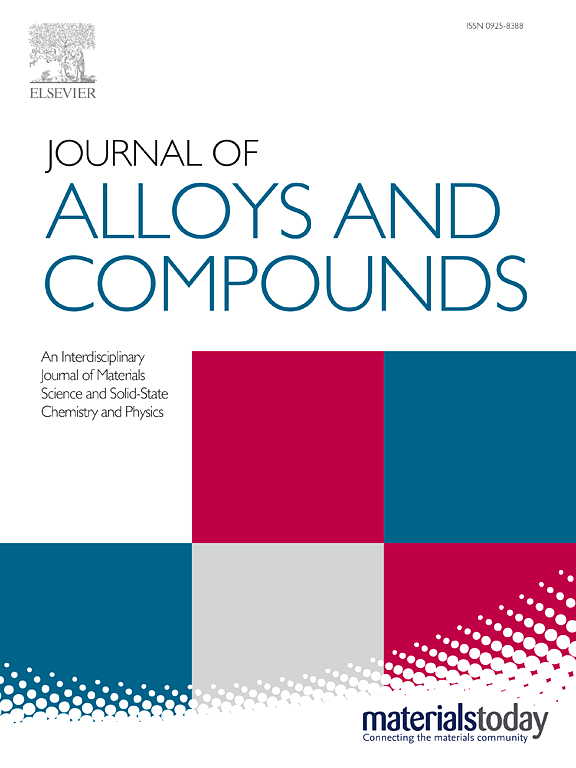用于人体氧氟沙星检测的多壁碳纳米管-钨酸镍集成丝网印刷碳电极的创新结构
IF 6.3
2区 材料科学
Q2 CHEMISTRY, PHYSICAL
引用次数: 0
摘要
氧氟沙星(of氧沙星)残留物是一种广泛使用的动物抗生素,但其对水体的污染对环境和人类健康构成严重威胁。因此,对其进行灵敏、选择性的电化学检测就显得尤为重要。本研究将多壁碳纳米管(MWCNT)与水热制备的钨酸镍(NiWO₄)结合,形成MWCNT@NiWO₄复合材料,制备了选择性OFL传感器。然后将MWCNT@NiWO₄复合材料涂覆在丝网印刷碳电极(SPCE)上或形成SPCE/MWCNT@NiWO₄电极。与未修饰的SPCE相比,SPCE/MWCNT@NiWO₄电极对氧氟沙星的电化学响应明显增强。此外,使用SPCE/MWCNT@NiWO₄电极对实际人体样品中的OFL进行了电化学分析。采用场发射扫描电镜、x射线衍射、高分辨率透射电镜、x射线光电子能谱、Brunauer-Emmette-Teller法、元素映射分析和傅里叶变换红外光谱对复合材料的结晶度和形貌进行了表征。采用循环伏安法、差分脉冲伏安法、电化学阻抗谱法、线性扫描伏安法和计时伏安法评价电催化性能和电化学表征。在最佳条件下,电极对OFL传感器表现出良好的电化学性能,灵敏度(灵敏度=斜率/活性表面积(cm2))为1.92µaµM−1 cm−2,检测下限(S/N = 3)为0.01µM,长线性检测范围为0.1 ~ 120µM。该电极具有良好的重复性、选择性、再现性、抗干扰性和稳定性。稳定性评估表明,在第100个周期内,性能保持一致。与传统的高效液相色谱法相比,电化学传感方法具有生态友好、检测时间短、简单、灵敏、方便、经济等优点。该传感器具有优异的稳定性、可重复使用性和抗药物制剂中常见赋形剂干扰的能力。该传感器在OFL检测中表现出良好的选择性、稳定性和良好的重现性。本研究提出了一种低成本、快速、简便的电化学传感器,用于人体血清和尿液样品中OFL的灵敏检测,具有较高的精密度和准确性。该研究为电化学传感器的应用提供了有价值的见解,为食品安全和环境保护的进步铺平了道路。本文章由计算机程序翻译,如有差异,请以英文原文为准。

Innovative Architecture of a Multi-Walled Carbon Nanotube-Nickel Tungstate-Integrated Screen-Printed Carbon Electrode for Ofloxacin Detection in Human Samples
Ofloxacin (OFL) residues are a widely used antibiotic for animals, but their contamination of water poses serious risks to the environment and human health. Therefore, its sensitive and selective electrochemical detection is more crucial. In this study, a selective OFL sensor was fabricated by Multi-Walled Carbon Nanotubes (MWCNT) combined with hydrothermally prepared Nickel Tungstate (NiWO₄) to form an MWCNT@NiWO₄ composite. After that, the MWCNT@NiWO₄ composite is coated on the screen-printed carbon electrode (SPCE) or forms SPCE/MWCNT@NiWO₄ electrode. The SPCE/MWCNT@NiWO₄ electrode exhibits a significantly enhanced electrochemical response for ofloxacin compared to the weak signal observed at the unmodified SPCE. Additionally, the electrochemical analysis of OFL in actual human samples was performed using the SPCE/MWCNT@NiWO₄ electrode. The crystallinity and morphology of the composite were characterized by field emission scanning electron microscopy, X-ray diffraction, high-resolution transmission electron microscopy, X-ray photoelectron spectroscopy, Brunauer-Emmette-Teller method, elemental mapping analysis, and Fourier Transform Infrared Spectroscopy. Electrocatalytic performance and electrochemical characterizations were evaluated using cyclic voltammetry, differential pulse voltammetry, electrochemical impedance spectrum, linear sweep voltammetry, and Chronoamperometry. Under optimal conditions, the electrode demonstrated excellent electrochemical performance towards the OFL sensor with a sensitivity (Sensitivity = Slope/Active surface area (cm2)) of 1.92 µA µM−1 cm−2, a low limit of detection (S/N = 3) of 0.01 µM, and long linear detection of 0.1 to 120 µM. The electrode also showed excellent repeatability, selectivity, reproducibility, anti-interference, and stability. Stability evaluations demonstrate consistent performance over the 100th cycle. Compared to the conventional HPLC method, the developed electrochemical sensing approach offers advantages such as eco-friendliness, reduced detection time, simplicity, sensitivity, convenience, and cost-effectiveness. The sensor exhibits excellent stability, reusability, and resistance to interference from commonly present excipients in pharmaceutical formulations. The sensor demonstrated excellent selectivity, strong stability, and satisfactory reproducibility in OFL detection. This study presents a low-cost, rapid, and straightforward electrochemical sensor for the sensitive detection of OFL in human blood serum and urine samples, which demonstrates high precision and accuracy. This study provides valuable insights into the use of electrochemical sensors, paving the way for advancements in food safety and environmental protection.
求助全文
通过发布文献求助,成功后即可免费获取论文全文。
去求助
来源期刊

Journal of Alloys and Compounds
工程技术-材料科学:综合
CiteScore
11.10
自引率
14.50%
发文量
5146
审稿时长
67 days
期刊介绍:
The Journal of Alloys and Compounds is intended to serve as an international medium for the publication of work on solid materials comprising compounds as well as alloys. Its great strength lies in the diversity of discipline which it encompasses, drawing together results from materials science, solid-state chemistry and physics.
 求助内容:
求助内容: 应助结果提醒方式:
应助结果提醒方式:


